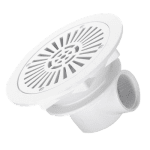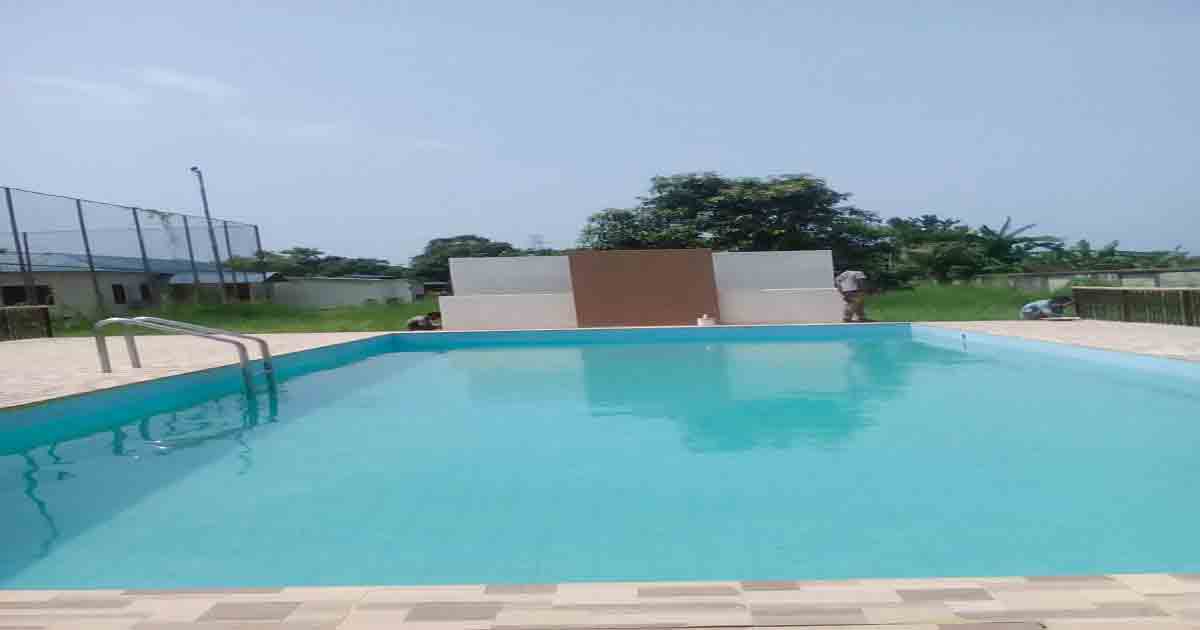Swimming pool design and construction
Swimming pool design and construction is a multifaceted process that combines aesthetic considerations with technical expertise to create functional, safe, and visually appealing aquatic environments. Whether for residential, commercial, or institutional purposes, the design and construction of a swimming pool involve several key stages, from initial planning and conceptualization to final implementation and post-construction maintenance. This comprehensive guide explores the intricacies of swimming pool design and construction, highlighting essential considerations, techniques, and the role of professional expertise in delivering successful pool projects.
1. Initial Consultation and Project Planning (Swimming pool design and construction)
The journey to creating a well-designed swimming pool begins with an initial consultation between the client and pool design professionals. This phase is crucial for understanding the client’s vision, functional requirements, budget constraints, and site-specific considerations. Key aspects discussed during the consultation include:
- Site Evaluation: Assessment of the property layout, topography, soil conditions, and existing structures to determine the optimal location and size of the pool.
- Design Preferences: Exploration of pool shapes, styles, and features that align with the client’s aesthetic preferences and functional needs.
- Budgetary Constraints: Establishing a realistic budget based on the scope of work, materials, construction methods, and desired amenities.
Keyword: swimming pool design and construction
2. Conceptual Design and Visualization (Swimming pool design and construction)
After gathering client input and site information, pool designers use advanced software tools to create conceptual designs and 3D renderings of the proposed pool. This phase allows clients to visualize the final product, make design revisions, and ensure the pool integrates harmoniously with the surrounding landscape and architectural elements. Key considerations in conceptual design include:
- Pool Shape and Layout: Selection of pool shapes (e.g., rectangular, oval, freeform) that complement the property’s aesthetics and space utilization.
- Amenities and Features: Integration of water features (e.g., waterfalls, fountains), lighting effects, decking options, and landscaping to enhance the pool environment.
- Material Choices: Evaluation of pool finish options (e.g., plaster, tile, aggregate) and decking materials (e.g., concrete, natural stone, pavers) based on durability, aesthetics, and maintenance requirements.
Keyword: swimming pool design
3. Engineering and Structural Considerations (Swimming pool design and construction)
Once the conceptual design is approved, pool engineers and structural specialists collaborate to ensure the pool’s structural integrity, safety, and compliance with building codes and regulations. Engineering considerations include:
- Excavation and Grading: Determination of excavation depth, soil stabilization measures, and drainage solutions to prevent water accumulation around the pool area.
- Reinforcement and Support: Specification of materials (e.g., reinforced concrete, steel) and construction techniques to support the pool shell, walls, and foundation.
- Hydraulic Systems: Design of plumbing infrastructure, circulation systems, and filtration equipment to maintain water quality and circulation efficiency.
- Electrical Requirements: Integration of lighting, heating systems, automation controls, and safety features (e.g., underwater lighting, pool alarms) to enhance functionality and user experience.
Keyword: swimming pool construction
4. Construction Methods and Techniques (Swimming pool design and construction)
The construction phase of swimming pool projects involves skilled craftsmanship and adherence to precise construction methods to ensure quality and efficiency. Techniques employed during construction include:
- Formwork and Concrete Pouring: Preparation of formwork molds and precise pouring of concrete to create the pool shell, walls, and structural components.
- Tile Installation: Application of decorative tiles, mosaics, or glass accents to enhance aesthetic appeal and provide a durable, waterproof surface.
- Decking and Coping: Installation of non-slip decking materials (e.g., stamped concrete, natural stone, composite decking) and coping stones to define the pool perimeter and enhance safety.
- Water Feature Integration: Construction of waterfalls, spouts, jets, or cascades using specialized plumbing and hydraulic systems for visual and auditory enhancement.
Keyword: swimming pool construction techniques
5. Water Filtration and Circulation Systems (Swimming pool design and construction)
Efficient water filtration and circulation systems are essential for maintaining water clarity, hygiene, and chemical balance in swimming pools. Components of these systems include:
- Pumps and Filters: Selection and installation of circulation pumps and filtration systems (e.g., sand filters, cartridge filters, DE filters) to remove debris and contaminants from the water.
- Chemical Automation: Integration of chemical feeders, pH controllers, and sanitation systems (e.g., chlorine generators, UV sterilizers) to regulate water chemistry and minimize manual maintenance.
- Heating and Temperature Control: Installation of pool heaters, heat pumps, or solar heating systems to regulate water temperature and extend the swimming season.
- Automatic Pool Covers: Deployment of retractable or solid pool covers to conserve energy, reduce water evaporation, and enhance safety when the pool is not in use.
Keyword: swimming pool construction
6. Safety Features and Compliance (Swimming pool design and construction)
Safety is a paramount consideration in swimming pool design and construction, especially for residential and public pools. Compliance with safety standards and regulations includes:
- Fencing and Barriers: Installation of safety fences, gates, and self-closing latches to restrict access and prevent unsupervised entry into the pool area.
- Non-Slip Surfaces: Use of slip-resistant materials for decking, coping, and pool surrounds to reduce the risk of slips and falls.
- Underwater Visibility: Installation of clear, well-lit water for visibility of pool bottoms and depths, ensuring swimmers’ safety.
- Emergency Equipment: Provision of life-saving equipment (e.g., life rings, safety ropes, first aid kits) and signage to promote safe pool usage.
Keyword: swimming pool design and construction
7. Aesthetic Enhancements and Landscaping
Beyond functional considerations, swimming pool design often incorporates aesthetic enhancements and landscaping features to create a cohesive outdoor environment. These include:
- Water Features: Integration of waterfalls, cascades, bubblers, or laminar jets for visual appeal and soothing water sounds.
- Lighting Effects: Installation of underwater LED lights, fiber optics, or landscape lighting to create ambiance and extend pool use into the evening.
- Plantings and Greenery: Incorporation of native plants, shrubs, and trees around the pool perimeter to provide shade, privacy, and natural beauty.
- Hardscaping: Design of seating areas, pergolas, fire pits, or outdoor kitchens adjacent to the pool for relaxation, entertainment, and social gatherings.
Keyword: swimming pool design
8. Sustainability and Energy Efficiency
Incorporating sustainable practices and energy-efficient technologies is increasingly important in modern swimming pool design. Strategies include:
- Solar Heating: Utilization of solar panels or solar thermal systems to heat pool water and reduce reliance on conventional energy sources.
- Variable-Speed Pumps: Installation of energy-efficient pumps and motors that adjust water flow rates to optimize energy consumption and operating costs.
- Water Conservation: Implementation of water-saving features such as automatic pool covers, efficient filtration systems, and drought-tolerant landscaping.
- LED and Smart Lighting: Adoption of LED lighting and smart controls to minimize electricity usage while enhancing visual appeal and functionality.
Keyword: swimming pool construction
9. Maintenance and Long-Term Care
After completion, ongoing maintenance is essential to preserve the pool’s aesthetics, functionality, and structural integrity. Maintenance tasks include:
- Water Testing and Treatment: Regular monitoring of water chemistry (e.g., pH, chlorine levels) and application of chemicals to maintain water balance and clarity.
- Cleaning and Skimming: Routine removal of debris, leaves, and sediment from the pool surface using skimmers and robotic cleaners.
- Equipment Inspection: Scheduled inspections of pumps, filters, heaters, and automation systems to detect and address potential issues promptly.
- Seasonal Services: Preparation for seasonal changes (e.g., winterization) and opening services to ensure the pool is operational and safe for use.
Keyword: swimming pool design and construction
10. Client Education and Satisfaction
Effective communication and client education are integral to successful swimming pool projects. Pool designers and contractors provide comprehensive guidance on pool operation, maintenance best practices, and safety protocols to empower clients and ensure satisfaction. Transparent communication throughout the design and construction process fosters trust, enhances project outcomes, and promotes long-term relationships with clients.
Designing and constructing a swimming pool is an exciting process that allows homeowners to create a customized outdoor space for relaxation, recreation, and entertainment. Whether you’re building a pool for family use, a private oasis, or a commercial space, the design and construction process involves several important steps that require careful planning and expert execution.
In this article, we will explore the key aspects of swimming pool design and construction, from initial design concepts to the final touches, and the factors that influence the overall cost and success of your project.
1. The Importance of Pool Design
A well-thought-out swimming pool design ensures that the final pool not only looks great but functions effectively and meets your specific needs. The design phase involves choosing the pool’s shape, size, depth, materials, and features.
a. Shape and Size
The shape and size of your pool are crucial design elements that should reflect both your aesthetic preferences and the practical use of the pool. Pools come in various shapes, including traditional rectangular, oval, and kidney-shaped designs, as well as more custom, freeform shapes that can integrate with natural landscaping.
The size of the pool is typically dictated by the available space in your backyard or property. Larger pools are ideal for those who want to entertain, swim laps, or include additional features such as diving boards or spas, while smaller pools might be sufficient for casual swimming or cooling off during hot days.
b. Pool Depth
Pool depth is another key factor in the design process. Shallow pools are ideal for families with children or those who want a pool primarily for lounging and wading. For those who plan to use the pool for exercise, such as swimming laps, a deeper pool may be necessary. A diving pool requires deeper sections, usually around 8-10 feet.
c. Materials and Finishes
The materials used in pool construction play a significant role in both the aesthetic appeal and durability of the pool. Common materials include:
- Concrete Pools: Highly customizable and versatile, concrete pools can be molded into any shape and finished with plaster, pebble, tile, or other materials. Concrete pools are durable but tend to be more expensive and require regular maintenance.
- Fiberglass Pools: Pre-formed fiberglass pools offer a faster construction timeline and are relatively low-maintenance. They are available in standard shapes and sizes but have limited customization options compared to concrete pools.
- Vinyl Pools: Vinyl-lined pools are cost-effective and relatively easy to install. They come with a flexible vinyl liner that is installed over a steel or polymer frame, but they are less durable than concrete or fiberglass pools and can require liner replacement after several years.
d. Additional Features
Adding extra features to your pool can enhance both its functionality and visual appeal. Some popular features include:
- Waterfalls, Fountains, and Spillovers: Water features add a soothing, natural element to the pool and can help create a luxurious, resort-like atmosphere.
- Lighting: Pool lighting is essential for evening swims and can also create a dramatic effect. LED lights are energy-efficient and come in a range of colors and designs to enhance the ambiance.
- Spas and Hot Tubs: For added relaxation, a spa or hot tub integrated into the pool design is a popular choice. These can be designed to spill over into the pool or sit as a separate feature.
- Pool Decking: The pool decking area should complement the pool’s design and provide space for lounging, entertaining, and walking around the pool. Materials such as stone, concrete, wood, or composite decking are commonly used.
2. The Construction Process
Once the design is finalized, the construction process begins. This phase typically follows several key steps:
a. Site Preparation and Excavation
The first step in pool construction is preparing the site. This includes clearing the area of any debris, trees, or structures that may be in the way. Excavation is a critical part of the process, and large machinery is typically required to dig the pool’s foundation.
For concrete pools, the excavation will outline the shape and depth of the pool, while for fiberglass and vinyl pools, the hole will need to be slightly larger than the pool shell to allow for installation.
Conclusion
Swimming pool design and construction is a collaborative process that blends creativity, technical expertise, and meticulous planning to create inviting and functional aquatic spaces. From initial concept development and engineering to material selection, construction techniques, and post-construction maintenance, each stage contributes to achieving a well-executed pool project. By prioritizing quality craftsmanship, safety compliance, and client satisfaction, professional pool designers and contractors deliver enduring value and enjoyment for homeowners, businesses, and communities alike. Investing in professional expertise ensures that swimming pools not only meet but exceed expectations, providing a source of relaxation, recreation, and aesthetic enhancement for years to come.


















